Unlocking Social Potential with Peer Influence
Peer modeling is a powerful strategy within Applied Behavior Analysis (ABA) therapy, harnessing the natural influence of peers to promote social skills, communication, and behavioral development in children with autism. When effectively implemented, peer modeling not only accelerates learning but also fosters inclusive environments that support meaningful social interactions and emotional growth. This article explores how to expertly incorporate peer modeling into ABA sessions, the strategies involved, and the substantial benefits it offers.
Effective Implementation of Peer Modeling in ABA Sessions
How can peer modeling be effectively implemented in ABA therapy sessions?
Implementing peer modeling successfully requires careful planning and execution. The first step is selecting the right peers, who are typically children with strong social skills, popularity, and prosocial behavior. These peer models should be well-connected to children with autism spectrum disorder (ASD) and possess higher social standing, which helps in motivating children to imitate and engage.
Training these peer models is crucial for consistency and efficacy. Behavioral Skills Training (BST) is a commonly used method that involves instructing, demonstrating, role-playing, and providing feedback. Through BST, peer models learn specific behaviors such as sharing toys, taking turns, initiating conversations, and following social routines. This preparation ensures they understand what is expected and can act as positive models.
Once trained, peer modeling is integrated into therapy activities in various settings. This includes structured peer play sessions, naturalistic interactions during daily routines, and group tasks that foster spontaneous imitation and social exchanges. Natural contexts like playgrounds, community outings, or playdates are ideal for generalizing social behaviors learned during therapy.
Maintaining supervision and providing ongoing feedback are vital to uphold high-quality modeling. Regular observation allows therapists and caregivers to assess fidelity, correct inappropriate behaviors, and reinforce positive modeling. Continuous feedback helps peer models stay engaged and aligned with therapeutic goals.
Overall, effective peer modeling enhances the social and communication skills of children with ASD while also supporting peer models’ social development. This approach promotes inclusive interaction, encourages natural social engagement, and fosters a sense of community among children.
Strategies and Techniques for Using Peer Modeling to Teach Social Skills
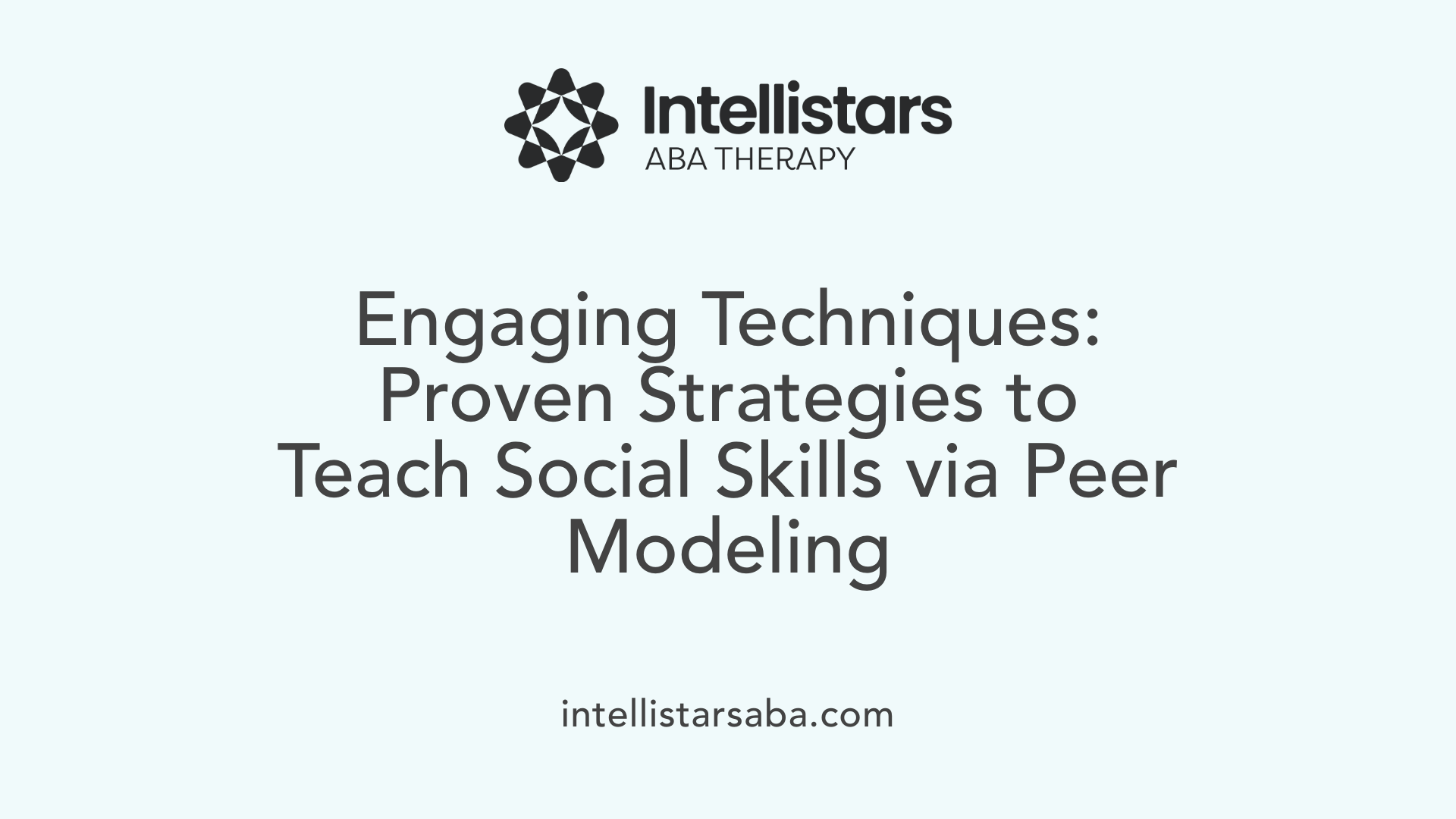
What strategies and techniques can be used to utilize peer modeling for teaching social skills?
Peer modeling is a powerful method within ABA therapy to foster social skills in children, especially those with autism spectrum disorder. Several approaches are used to effectively incorporate peer modeling into intervention plans.
One prominent technique is structured peer-mediated interventions. These involve training peers to serve as models and social partners, providing children with ASD opportunities for natural interaction. Group settings or inclusive classrooms facilitate peer engagement, making social interactions more authentic and less contrived.
Role-playing and video modeling are common strategies. In role-playing, children practice social scenarios with guidance, enabling them to learn and rehearse appropriate responses. Video modeling involves showing children videos of peers successfully executing social behaviors, which helps them internalize desired actions.
To maximize effectiveness, these strategies are often combined with reinforcement, prompts, and behavioral skills training (BST). Reinforcement, such as praise or tokens, encourages repetition of positive behaviors. Prompts can be verbal or visual cues that support the child's response during the learning phase, gradually fading as independence grows.
Age-appropriate and engaging activities are crucial. Using games, group tasks, and community outings makes learning enjoyable and relatable. This not only sustains motivation but also promotes the transfer of skills to real-world settings.
In recent years, innovative methods like video self-modeling have gained popularity. This involves recording children successfully demonstrating social skills and showing these videos to the children themselves. Peer modeling combined with self-video modeling accelerates social skill development, as children observe and imitate their own successful behaviors.
Research indicates that combining peer modeling with evidence-based ABA strategies enhances social communication, reduces social anxiety, and fosters meaningful peer relationships. Errorless learning, where correct behaviors are reinforced from the start, and scaffolding, providing supportive structures, further improve outcomes.
Overall, these techniques, rooted in ABA and verbal behavior analysis, create a comprehensive approach to teaching social skills through peer modeling, making interventions more engaging, natural, and effective.
Applying Peer Modeling Principles for Improved Therapy Outcomes
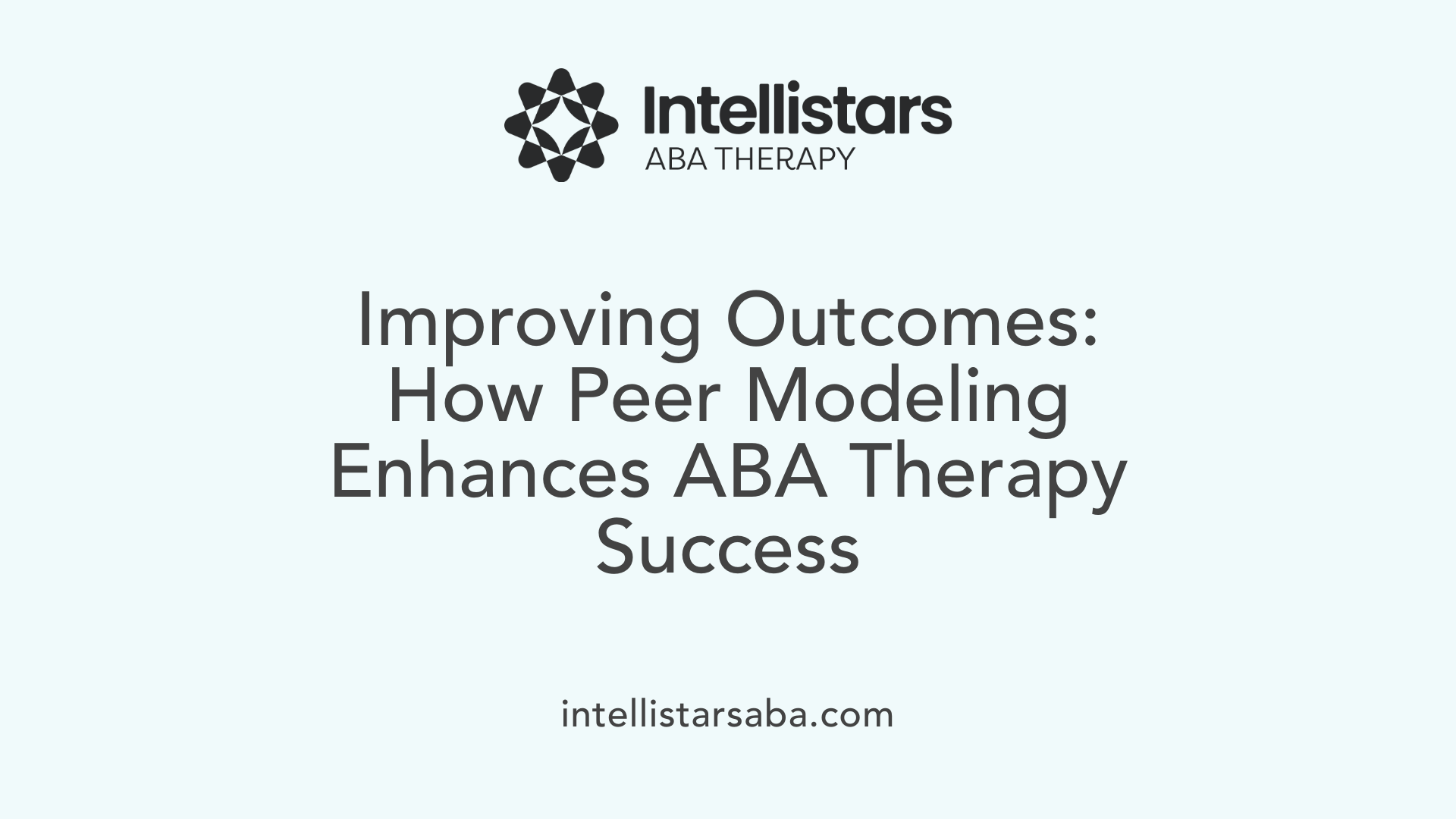
How can educators apply peer modeling principles within ABA to improve therapy outcomes?
Peer modeling is a powerful strategy used within Applied Behavior Analysis (ABA) to enhance social skills, communication, and adaptive behaviors among children with autism. It leverages the natural influence of peers to promote observational learning, which can lead to meaningful improvements in therapy results.
In natural environments, children often learn by observing those around them. In ABA therapy, this principle is applied by arranging situations where children can see their peers demonstrating desired behaviors, such as sharing, requesting appropriately, or demonstrating emotional recognition. These settings are typically role-modeled explicitly or through video, encouraging children to imitate behaviors naturally.
To maximize effectiveness, selecting appropriate peer models is crucial. These peers should exhibit the targeted behaviors reliably and be capable of serving as positive examples. Proper training of peer models is necessary—educators and therapists typically prepare these children by explaining the behaviors to demonstrate, practicing interactions, and emphasizing positive reinforcement.
Integration of peer modeling into therapy plans involves structured activities. For instance, social skills groups or community outings can serve as platforms for peer interactions. These activities promote generalization of learned skills from therapy environments to real-life contexts, making learning relevant and sustainable.
Using reinforcement strategies aligned with naturalistic teaching bolsters the effectiveness of peer modeling. When peers' correct behaviors are acknowledged with praise, tokens, or privileges, children are motivated to imitate. Likewise, reinforcing the peer models themselves encourages continued positive behavior throughout interactions.
This approach fosters social engagement and supports children in learning through imitation, which is a core component of ABA. It not only advances skill acquisition but also helps children develop deeper peer relationships and social confidence. Overall, incorporating peer modeling within ABA strategies creates a dynamic, engaging learning environment that capitalizes on observational learning and peer influence to improve therapy outcomes.
| Technique | Description | Benefits |
|---|---|---|
| Selection & Training | Choosing reliable peer models and preparing them | Consistent behavior demonstration |
| Observation & Imitation | Children watch peers and imitate behaviors | Develops social and communication skills |
| Reinforcement | Providing praise or rewards for modeled behaviors | Motivates ongoing participation |
| Integration in Natural Settings | Using play and community outings for peer interactions | Promotes generalization |
| Peer-based Activities | Group play, role-playing, social stories | Enhances engagement and skill transfer |
By systematically applying these processes, educators and therapists can significantly improve the social and behavioral development of children receiving ABA therapy.
Benefits of Incorporating Peer Modeling in Therapy for Children with Autism
How does peer modeling improve social interactions and communication?
Incorporating peer modeling into therapy for children with autism enhances social skills by providing natural and relatable social cues. When children observe their peers demonstrating appropriate behaviors, they are more likely to imitate those actions. This visual and interactive approach makes learning more engaging and effective. Peer models often showcase communication techniques, such as eye contact, greetings, or sharing, which children with autism can replicate. The repetition of these observed behaviors helps improve overall communication abilities, fostering more meaningful social exchanges.
How does peer modeling promote social relationships and emotional skills?
Peer modeling creates a supportive environment where children learn to develop and sustain friendships. When they see peers engaging in positive interactions, they pick up on social norms and emotional cues. Through observation, children learn how to recognize emotions, respond appropriately, and navigate social situations. This process builds emotional awareness and regulation, leading to increased confidence in social settings. Peer models can also serve as social catalysts, encouraging children with autism to initiate interactions and participate in group activities.
In what ways does peer modeling support the generalization of learned behaviors?
A significant benefit of peer modeling is the ability to help children apply skills learned in therapy to real-world environments. When children practice social behaviors with peer models in different contexts—such as classrooms, playgrounds, or community settings—they are more likely to carry over these skills beyond structured sessions. Peer interactions provide diverse scenarios that promote the adaptability and flexibility of social behaviors. As a result, children become better equipped to handle various social situations in everyday life.
How does peer modeling foster inclusion and reduce stigma?
Using peer models in therapy encourages inclusive practices by integrating typically developing children into the learning process. This promotes acceptance and understanding within peer groups, breaking down stereotypes and reducing stigma associated with autism. When children with autism participate alongside peers, it can enhance their sense of belonging and self-esteem. Similarly, typical peers develop empathy and social awareness, fostering a culture of inclusion, respect, and collaborative learning.
What are authentic social opportunities built through peer modeling?
Peer modeling creates genuine, real-life social opportunities by encouraging spontaneous interactions. Children learn social problem-solving, turn-taking, and cooperation in settings that mirror everyday situations. Engaging in activities like playing games, sharing stories, or cooperative tasks with peer models allows children to practice and internalize social skills naturally. These opportunities make learning meaningful and memorable, promoting long-term social competence.
| Aspect | Benefits | How Peer Modeling Supports It |
|---|---|---|
| Social Interaction | Improved social skills | Observation and imitation of peers demonstrating social behaviors |
| Communication | Enhanced expressive and receptive skills | Peer demonstration of conversational exchanges |
| Emotional Development | Better emotional regulation | Recognition and response to peers' emotions |
| Skill Generalization | Broader application of skills | Practice across different environments and peers |
| Inclusion | Reduced stigma | Participation with typically developing peers |
| Authentic Learning | Real-life social practice | Spontaneous interactions during play and routines |
Implementing peer modeling as part of ABA therapy provides a natural, engaging, and effective method to support children with autism in developing vital social and emotional skills. By leveraging the influence of peers, therapy becomes more inclusive, applicable, and sustainable, paving the way for better integration and social competence in everyday life.
Best Practices for Integrating Peer Modeling into ABA Sessions
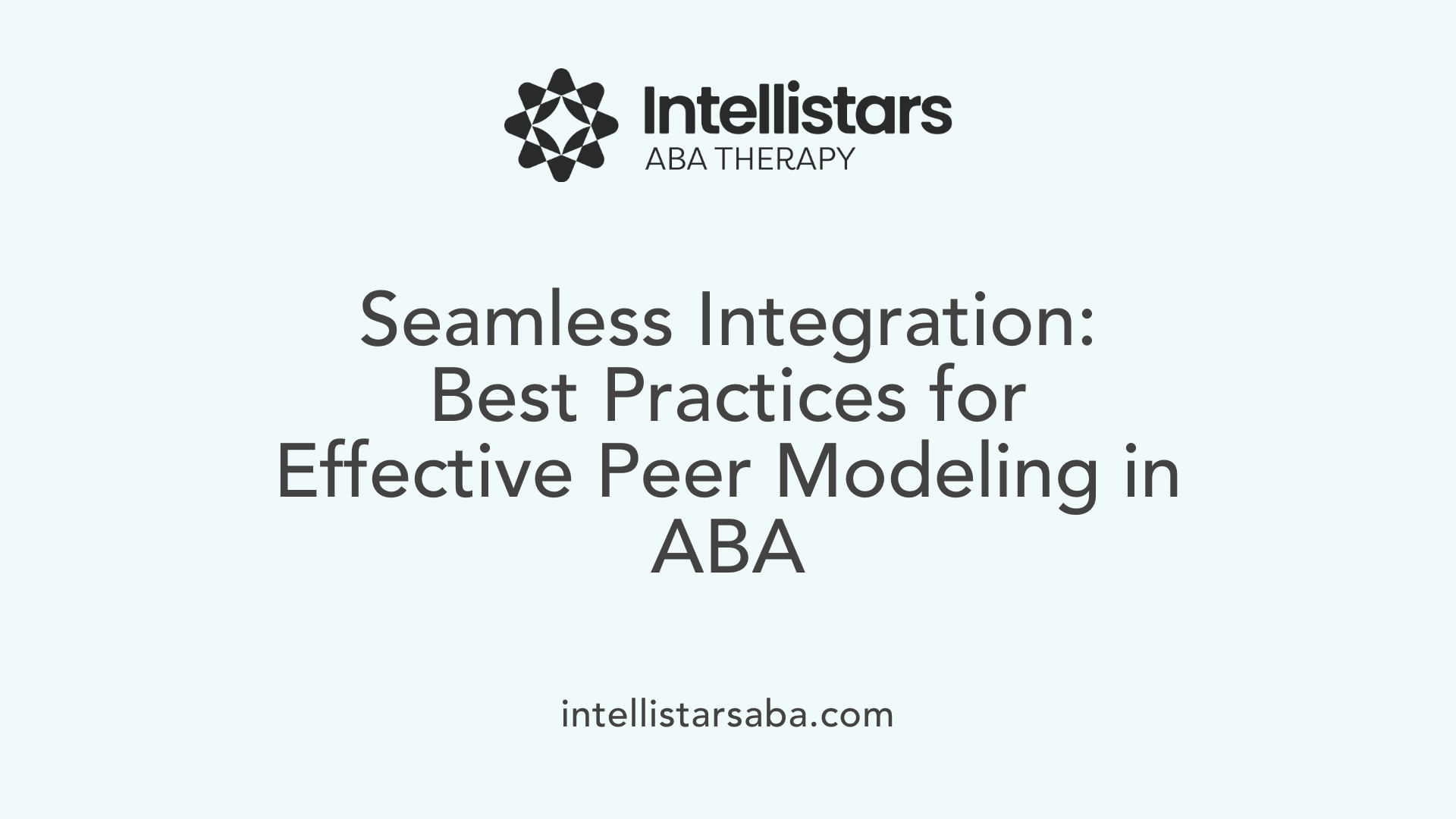
What are best practices for integrating peer modeling into ABA sessions?
Peer modeling is a powerful strategy within ABA therapy that uses typically developing peers to model desired behaviors and social skills for children with autism spectrum disorder (ASD). When done effectively, it can enhance social interactions, improve communication, and promote generalization of learned skills.
A crucial first step is selecting appropriate peer models. Ideal peers are those of similar age to the child with ASD, motivated to participate, and possessing positive social and communication skills. These children should be comfortable in group settings and capable of engaging in supportive behaviors. This careful selection ensures that the children with ASD are exposed to appropriate and consistent models.
Training peer models is a critical component. Before sessions, peers receive guidance through visual aids, social stories, or written instructions that highlight expected behaviors. This preparation includes demonstrating the target behavior, practicing it with the child, and receiving positive reinforcement for their efforts. Reinforcement, such as praise or small rewards, encourages continued engagement and appropriate responding.
Diverse modeling techniques make interventions flexible and more engaging. These include physical modeling—where the peer demonstrates the behavior physically; verbal modeling—where they describe actions; video modeling—using recordings of peers performing desired behaviors; planned modeling—structured sessions with specific goals; and spontaneous modeling—natural, unprompted demonstrations during play or social interactions. Using multiple methods increases the chances that children will observe, imitate, and internalize social behaviors.
To maximize effectiveness, systematic prompting and fading are employed. Techniques like progressive time delay or least-to-most prompts guide children toward independent responses. As skills improve, prompts are gradually reduced, fostering independence and reducing reliance on adult cues.
Monitoring is essential. Regular assessments confirm if children retain skills over time and maintain social acceptance within peer groups. Observations help identify when to fade prompts further or introduce new goals. Additionally, fostering positive peer relationships benefits both parties, creating a supportive environment conducive to social growth.
In summary, best practices involve careful peer selection, thorough training using multiple modeling techniques, systematic prompting and fading, and ongoing monitoring to sustain skills and promote peer integration. When implemented consistently, peer modeling enhances social engagement and fosters a community-oriented approach to ABA therapy.
Educational Resources and Innovations for Video and Peer Modeling
Are there educational resources available on using video or peer modeling techniques in ABA?
Yes, a wide range of educational resources exist to support the use of video and peer modeling strategies within ABA. These materials include scholarly articles, detailed training modules, and comprehensive guides designed to help practitioners understand and implement these methods effectively.
Research articles provide empirical evidence on the efficacy of modeling techniques and suggest best practices for their application. Training modules, often offered through online platforms or workshops, offer hands-on experiences and step-by-step instructions for creating and utilizing video models or organizing peer-mediated interventions. These modules often include case studies, sample videos, and assessment tools.
Creating effective video models involves demonstrating behaviors clearly, using engaging visuals, and ensuring content is relevant to the child's learning goals. Practitioners are guided on techniques such as self-modeling, where children observe themselves performing desired behaviors, and peer modeling, where children learn by observing their classmates.
Assessment and progress monitoring are essential components of successful implementation. Resources frequently cover how to set measurable objectives, track behavioral changes, and adjust strategies accordingly. Tools such as data collection sheets and digital platforms enable continuous evaluation of the child's development.
Workshops and practitioner resources further enhance implementation skills. Many professional organizations and therapy centers provide training sessions that focus on integrating video and peer modeling into daily routines, classroom settings, or community activities. These programs emphasize ethical practices, child engagement, and individualized planning.
Implementing these strategies involves several steps, including designing engaging and appropriate video content, selecting peer models carefully, and creating a supportive environment for practice and reinforcement. Practitioners learn to facilitate naturalistic teaching moments where children can observe, imitate, and generalize skills across different settings.
In summary, the wealth of educational resources available empowers therapists, educators, and caregivers. They offer evidence-based guidance to harness video and peer modeling techniques effectively, ultimately enhancing social, communication, and adaptive skills for children with autism.
Training Peers as Role Models in ABA Therapy
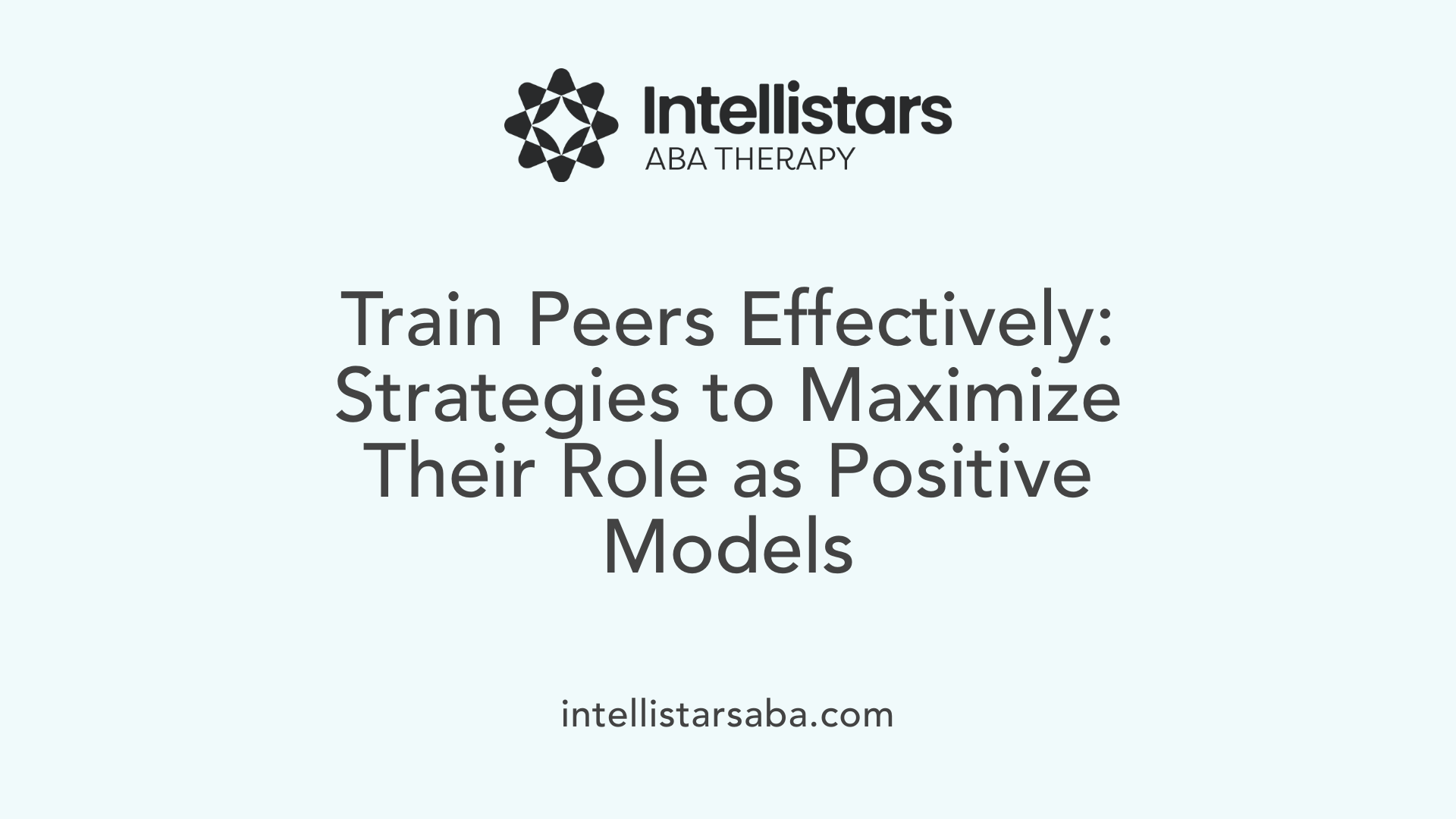
How can peers be trained to serve as effective models during therapy sessions?
Peers can play a vital role in ABA therapy by serving as natural, relatable models for children with autism. To maximize their effectiveness, a structured training framework is essential.
Initially, peers are taught specific social or behavioral skills through direct instruction and demonstration. This includes clear explanations and visual supports to ensure understanding.
Once the behaviors are demonstrated, peers are given opportunities to rehearse these skills in controlled settings. This rehearsal is often guided and followed by immediate feedback from therapists.
Behavioral Skills Training (BST) is a common approach used to teach peers. BST incorporates several steps:
- Instruction: Explaining what behaviors or skills are expected.
- Modeling: Showing the behaviors in real-time or video examples.
- Rehearsal: Allowing peers to practice the behaviors.
- Feedback: Providing constructive comments to improve performance.
Consistent reinforcement of appropriate peer behaviors encourages correct imitation. Visual aids, checklists, and role-play scenarios also strengthen learning.
Training typically involves ongoing supervision, where therapists observe and support peer interactions regularly. This continuous guidance helps maintain high-quality modeling.
To foster natural peer interactions, strategies include:
- Using social stories or scripts to prepare peers for specific interactions.
- Incorporating peer engagement in everyday activities and community outings.
- Encouraging peers to give positive reinforcement for appropriate behaviors.
These practices promote authentic, spontaneous social exchanges that are vital for the child's development of social skills.
Facilitating Social Development through Peer Modeling in ABA
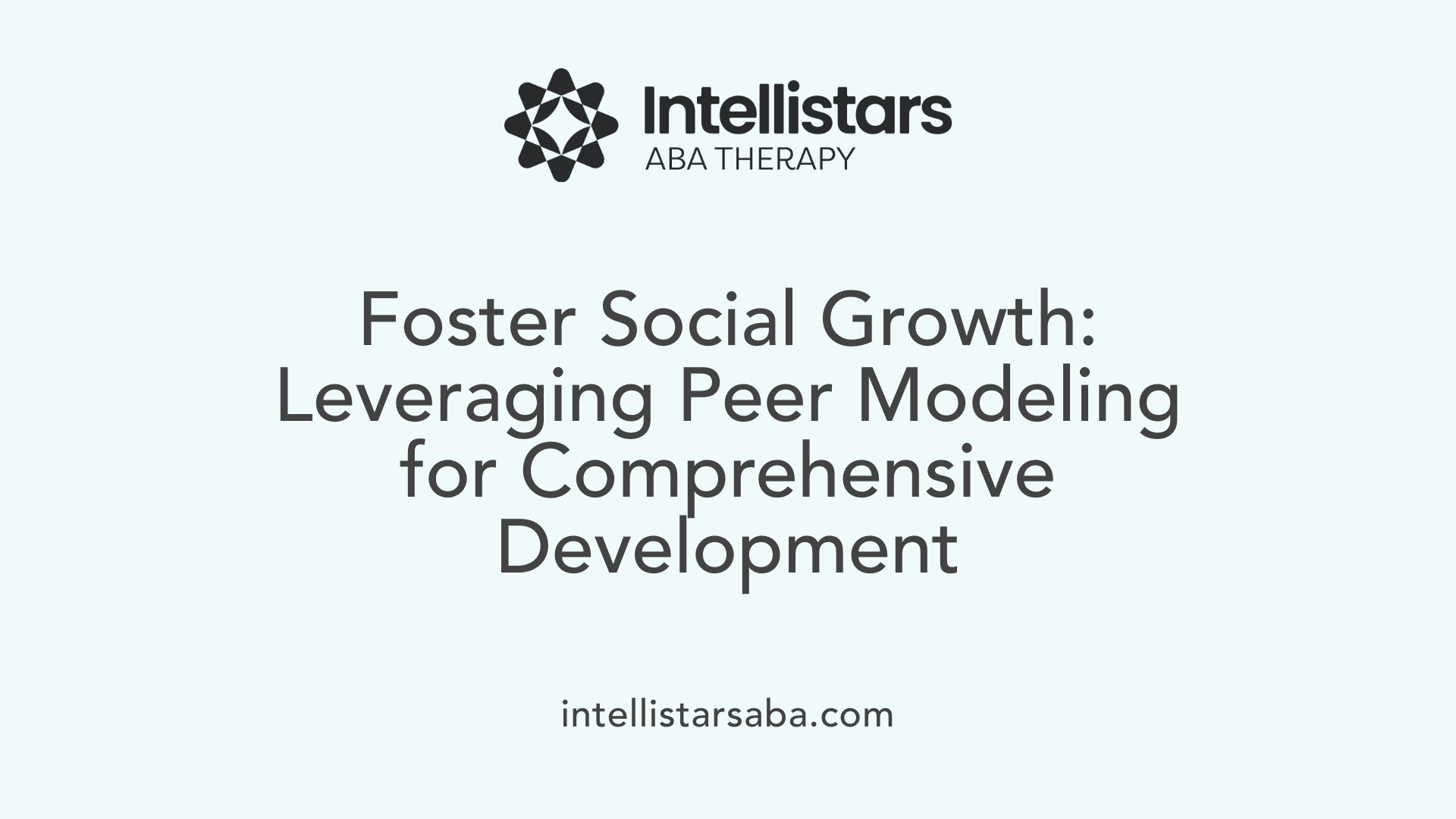
How does peer modeling facilitate the development of social skills in ABA therapy?
Peer modeling plays a crucial role in ABA therapy by offering children, especially those with autism or other developmental differences, the chance to learn social skills through observation and imitation. When children observe their peers demonstrating appropriate social behaviors, they are more likely to imitate these actions, which naturally promotes skill acquisition.
This method enhances motivation and engagement because children tend to be more interested and willing to participate when learning from peers who exhibit socially acceptable behaviors. They might practice greeting others, sharing toys, taking turns, or showing empathy during play.
In structured settings like small group sessions, peer modeling is systematically used alongside prompts and reinforcement to teach social skills effectively. These sessions provide a safe and supportive environment where children can practice behaviors with feedback, making learning more efficient.
Beyond skill training, peer modeling fosters meaningful social connections. Interactions with peers help children develop friendships, improving their emotional well-being and reducing social anxiety.
Moreover, practicing skills in peer interactions helps children generalize these skills across various environments, such as school, community outings, or home. This broad application of learned behaviors supports overall social competence.
In summary, peer modeling is a proven, evidence-based approach that not only teaches specific social behaviors but also encourages ongoing social participation and relationship building. It creates a naturalistic context for learning, making social development more engaging and sustainable for children undergoing ABA therapy.
Embracing Peer Modeling for Lasting Social Gains
Integrating peer modeling into ABA therapy is a dynamic and evidence-supported approach that significantly enhances social skill development in children with autism. Through careful selection, systematic training, and strategic implementation, peer modeling fosters naturalistic learning environments that promote imitation, communication, and social interaction. The benefits extend beyond individual growth, contributing to inclusive, accepting settings where children can develop meaningful relationships. As research continues to evolve, practitioners and educators are encouraged to embrace innovative techniques like video modeling, peer mediation, and naturalistic strategies to maximize the impact of peer influence. With continued dedication to ethical and best practices, peer modeling remains an invaluable tool in nurturing social competence and emotional resilience in children with autism.
References
- Social Skills Development ABA Therapy for Kids with Autism
- ABA Therapy Examples, Definition & Techniques
- A Look at Applied Behavior Analysis (ABA) Therapy - Cortica
- Social Skills: Helping Children Build Meaningful Connections
- The Benefits of Group ABA Therapy Sessions
- Best Social Skills Training Methods for Autism - Astra ABA
- Treatment summary: Peer modeling
- The Power of Peer Models for Language Development
- Using Behavioral Skills Training to Teach Peer Models






